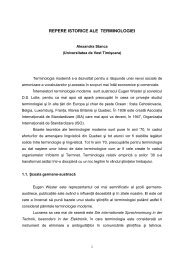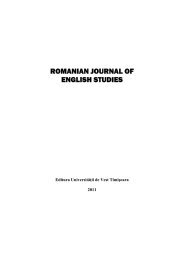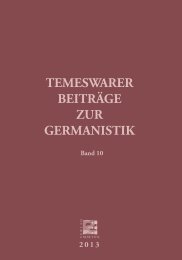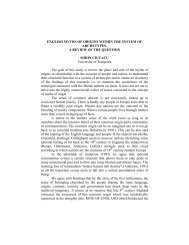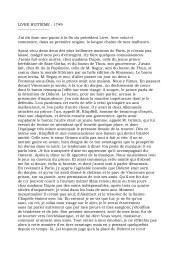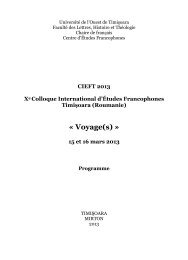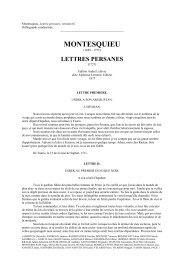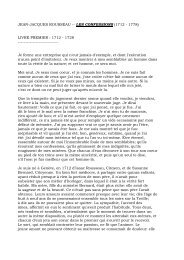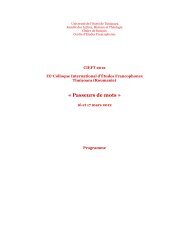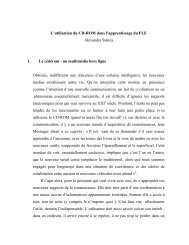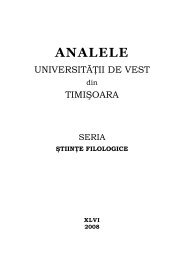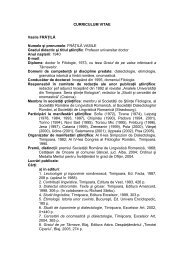TRANSLATION AND MEANING: A CULTURAL- COGNITIVE ...
TRANSLATION AND MEANING: A CULTURAL- COGNITIVE ...
TRANSLATION AND MEANING: A CULTURAL- COGNITIVE ...
Create successful ePaper yourself
Turn your PDF publications into a flip-book with our unique Google optimized e-Paper software.
Let us now consider some of the combined operations. In the<br />
following titles we find examples for the combination of TRF with MOD<br />
and of TRF with SUB: Dogville – A menedék (“the shelter”) for the English<br />
original Dogville, and Naqoyqatsi – Erőszakos világ (“a violent world”) for<br />
the original Naqoyqatsi. In the first one, the name of the town is transferred<br />
and is supplemented by an expression whose content serves to implicate the<br />
plot. The explanation for this may again be a difference between<br />
assumptions relating to the relevance of a film title in the cognitive<br />
environments of source and target readers. In the second example, the<br />
substitution of the second element is motivated by a need to preserve an<br />
implicated premise relating to the connection with an earlier movie entitled<br />
Koyaanisqatsi – Kizökkent világ (“a demeshed world”, English original:<br />
Koyaanisqatsi).<br />
The same intention to preserve an encyclopaedic assumption about<br />
an earlier film is revealed by the substitution in the first part of the title in<br />
Doktor Szöszi 2 (“dr. Blondie”), the Hungarian version of Legally Blonde 2:<br />
Red, White and Blonde. The second part of the title, however, is missing,<br />
that is, it went through a modification. The reason for this can only be that<br />
the translator thought the preservation of the logical or the encyclopaedic<br />
content of the second part of the title would not make the Hungarian title<br />
any more relevant. If I am not mistaken, here the English original<br />
contextually implies a humorous assumption relating to a connection<br />
between the American colours, national matters and the blonde heroine.<br />
Since the premise relating to the colours of the American flag is absent, or<br />
only weakly present, in the Hungarian target reader’s cognitive<br />
environment, the activation of this assumption would probably have<br />
required a gratuitous amount of processing effort, which in turn would have<br />
caused a decrease of relevance.<br />
The mystery of how Shanghai became London in the Hungarian<br />
rendering of Shanghai Knights as Londoni csapás (“London raid”): the<br />
reason, again, is that the translator’s intention was to preserve a contextual<br />
assumption about the connection between this Jackie Chan film and an<br />
earlier one entitled in Hungarian as Új csapás (“a new raid”, for the original<br />
Shanghai Noon), of which it is a sequel.<br />
7. Conclusions<br />
How a target language title may achieve optimal resemblance with<br />
the original depends primarily on whether the translator works in a primary<br />
or in a secondary communication situation. In a primary communication<br />
situation TRF or TRL, while in a secondary communication situation SUB



